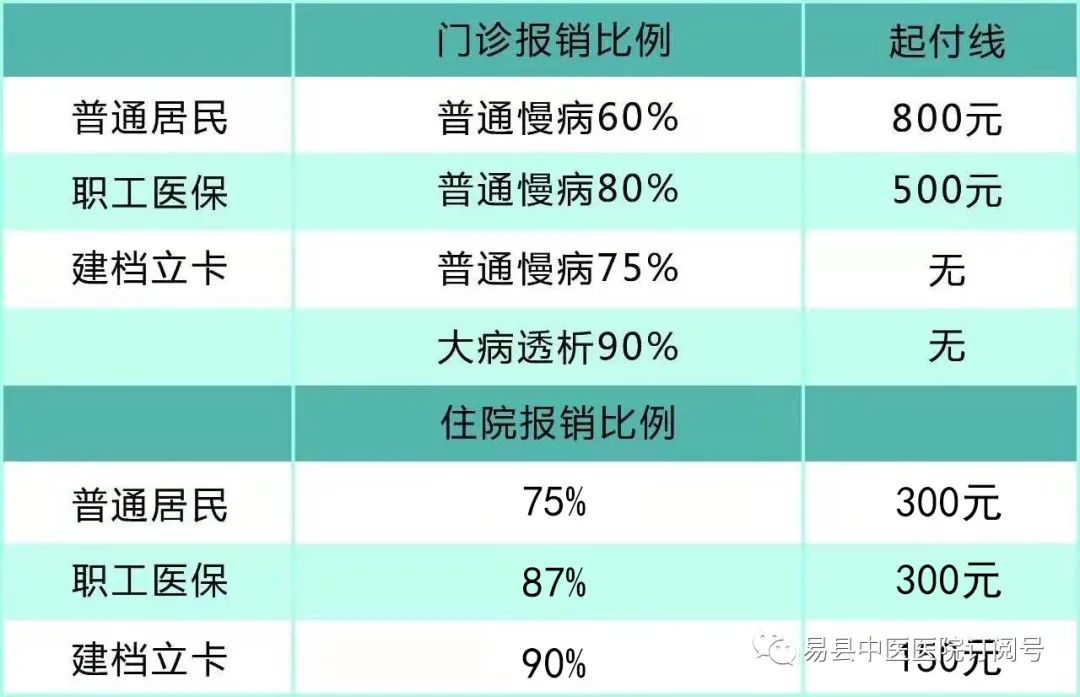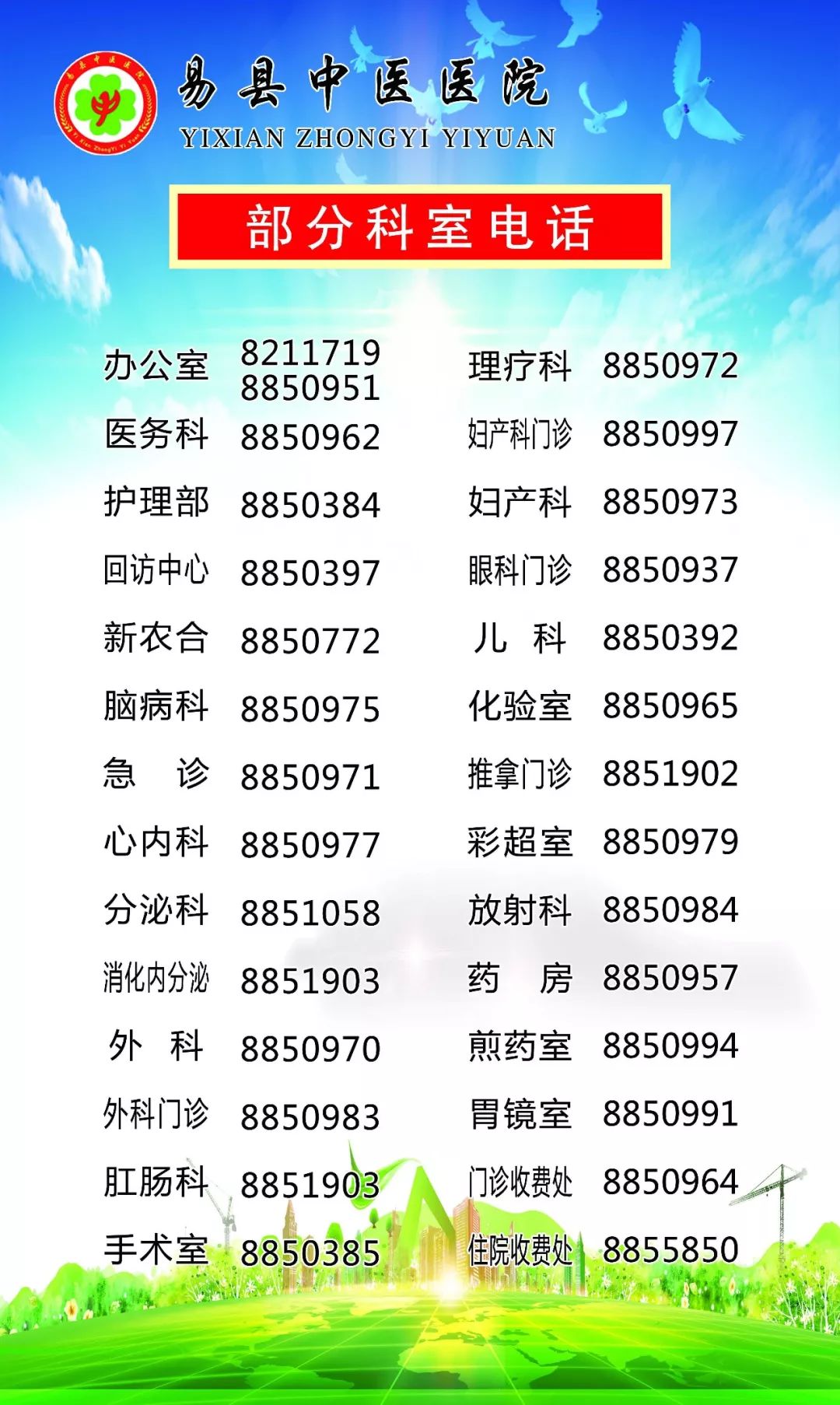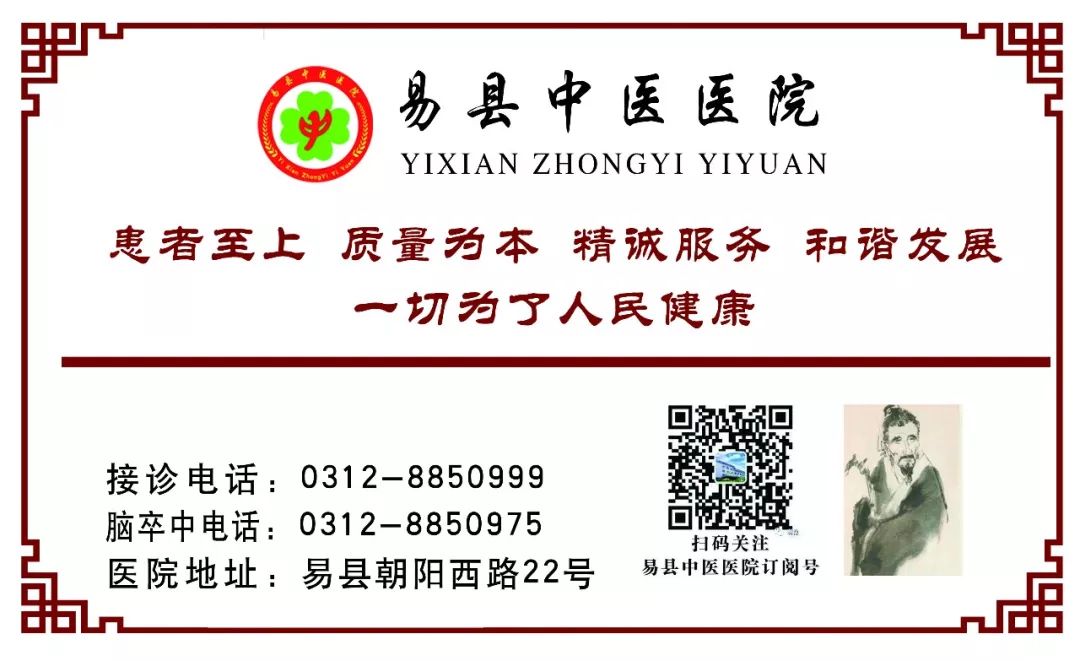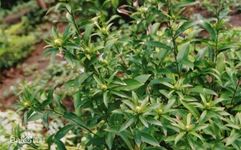
Cang Zhu (Atractylodes)
Source of the Herb
This herb is the dried rhizome of the perennial herbaceous plant Atractylodes macrocephala or Atractylodes lancea, primarily produced in Jiangsu, Henan, Hebei, Shanxi, and Shaanxi. The highest quality is from the Maoshan area in Jiangsu, hence the name Maocangzhu. It is harvested in spring and autumn, cleaned of soil, dried, and the fibrous roots are removed. It can be used raw or stir-fried with wheat bran.
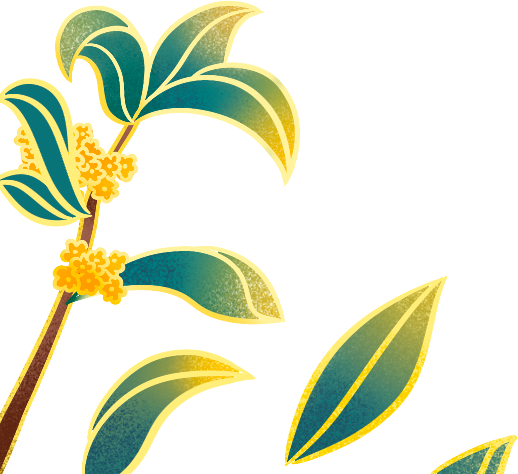
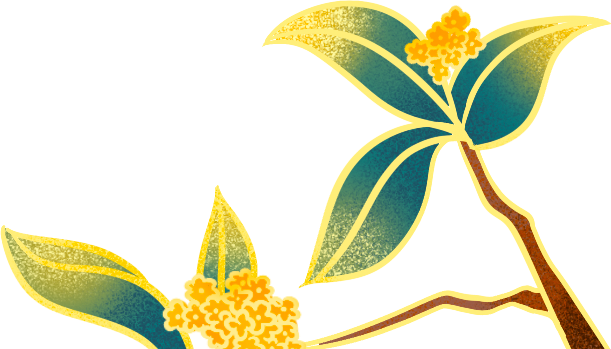
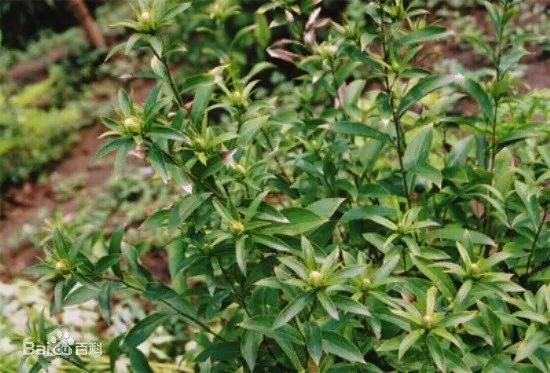
Aliases Qiang Tou Cai, Chi Zhu, Ma Ji
Properties and Channels Entered Spicy, bitter, warm. Enters the Spleen, Stomach, and Liver meridians.
Functions and Indications Dries dampness and strengthens the Spleen, dispels wind and scatters cold, brightens the eyes. Used for abdominal distension, diarrhea, edema, beriberi, rheumatic pain, wind-cold colds, and night blindness.
Dosage Decoction, 3-9g.
Precautions Contraindicated in cases of Yin deficiency with internal heat and excessive sweating due to Qi deficiency.
Compatibility and Applications 1. Dampness obstructing the middle Jiao, abdominal distension, diarrhea, edema. This herb is bitter and warm, drying dampness to dispel turbid phlegm, and its spicy aroma strengthens the Spleen to harmonize the Spleen and Stomach. It is most suitable for symptoms of dampness obstructing the middle Jiao, Spleen deficiency leading to abdominal distension, nausea, poor appetite, vomiting, diarrhea, and fatigue, with a white greasy tongue coating, often combined with Hou Po (Magnolia Bark) and Chen Pi (Aged Tangerine Peel), such as Ping Wei San (Ping Wei Powder) (from He Ji Ju Fang). If used with Fu Ling (Poria), Ze Xie (Alisma), and Zhu Ling (Polyporus), it can treat Spleen deficiency with damp accumulation, phlegm retention, diarrhea, or edema, such as Wei Ling Tang (Wei Ling Decoction) (from Zheng Zhi Zhun Sheng).
2. Rheumatic pain, beriberi. This herb is spicy and drying, excelling at dispelling dampness, thus it is especially suitable for damp-heat bi syndrome, and can be used with Yi Yi Ren (Job’s Tears) and Du Huo (Angelica Pubescens) to dispel wind-dampness, such as Yi Yi Ren Tang (Job’s Tears Decoction) (from Lei Zheng Zhi Cai). If combined with Shi Gao (Gypsum) and Zhi Mu (Anemarrhena), it can treat damp-heat bi pain, with identification of properties such as Bai Hu Jia Cang Zhu Tang (Bai Hu Decoction with Atractylodes) (from Pu Ji Ben Shi Fang); used for damp-heat descending, beriberi with swelling and pain, weakness, often combined with Huang Bai (Phellodendron), Yi Yi Ren (Job’s Tears), and Niu Xi (Achyranthes) in Si Miao San (Four Marvels Powder) (from Cheng Fang Bian Du). If used with Long Dan Cao (Gentiana), Huang Qin (Scutellaria), and Zhi Zi (Gardenia), it can treat damp-heat leukorrhea, damp sores, and eczema.
3. Wind-cold colds. This herb is spicy and aromatic, capable of opening the pores and inducing sweating, dispelling wind-cold from the exterior, and due to its ability to overcome dampness, it is most suitable for wind-cold exterior syndrome with dampness, often used with Qiang Huo (Notopterygium), Bai Zhi (Angelica Dahurica), and Fang Feng (Saposhnikovia) in Shen Zhu San (Shen Zhu Powder) (from He Ji Ju Fang).
4. Night blindness, blurred vision. This herb can brighten the eyes, used for night blindness and blurred vision. It can be used alone or cooked with lamb liver or pig liver.
Identification of Properties
Cang Zhu: Appears irregularly bead-like or nodular cylindrical, slightly curved, occasionally branched, 3-10cm long, 1-2cm in diameter. The surface is gray-brown, with wrinkles, transverse grooves, and residual fibrous roots, the top has stem scars or residual stem bases. The texture is solid, the cross-section is yellow-white or gray-white, scattered with numerous orange-yellow or reddish-brown oil spots, commonly referred to as “vermilion spots”; when exposed for a while, it often crystallizes into white needle-like crystals, commonly referred to as “frosting”. The aroma is distinctive, with a slightly sweet, spicy, and bitter taste.
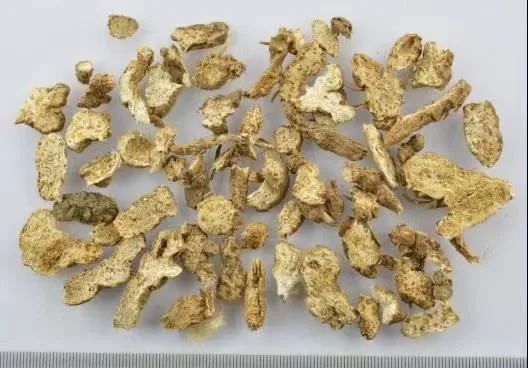
Bei Cang Zhu: Appears in lump-like or nodular cylindrical shapes, 4-9cm long, 1-4cm in diameter. The surface is black-brown, and when the outer skin is removed, it is yellow-brown. The texture is relatively loose, and the cross-section is scattered with yellow-brown oil spots, with no white needle-like crystals crystallizing. The aroma is milder, with a spicy and bitter taste.
Guan Cang Zhu: This herb is a common counterfeit of Cang Zhu. It is the dried root of the Asteraceae plant Guan Cang Zhu. The texture is lighter, the fracture surface is uneven, fibrous, and lacks vermilion spots.
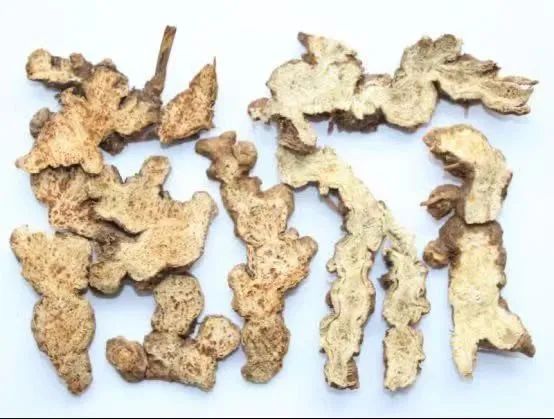
△ The above image is Guan Cang Zhu
Stir-fried Cang Zhu: The surface is yellow or charred yellow, with a stronger aroma than the raw product, and may also “frost”. After stir-frying, the spicy taste is reduced, the drying property is softened, and the effect of strengthening the Spleen and Stomach is enhanced.
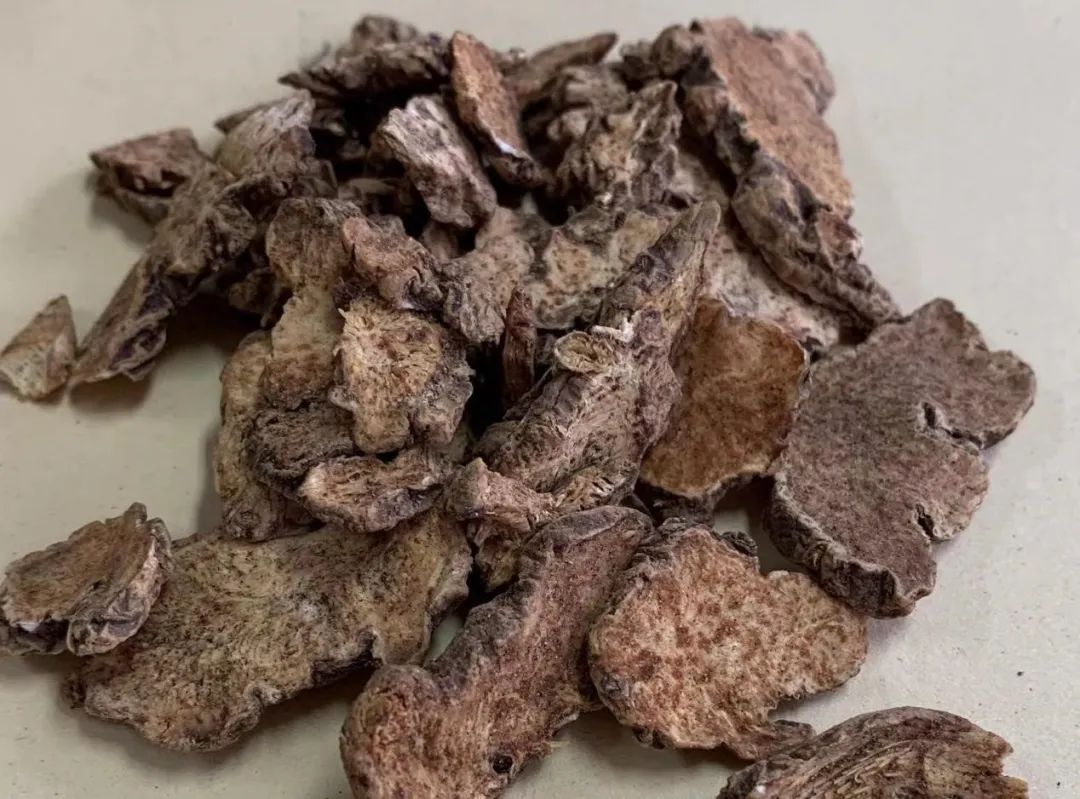
Ancient Textual Records
Shen Nong Ben Cao Jing: Treats wind-cold damp bi, dead muscle spasms. Long-term consumption of decoction can lighten the body and prolong life without hunger.
Ming Yi Bie Lu: Treats headaches, eliminates phlegm and water, expels wind-water swelling, relieves urgent fullness under the heart, and treats cholera with continuous vomiting and diarrhea, warms the stomach and promotes appetite.
Cang Zhu and Epidemics
In ancient times, Cang Zhu was frequently used as a preventive medicine against epidemics. For example, in “Songfeng Shuo Yi”, among 65 formulas for epidemic prevention, Cang Zhu was used most frequently. Li Shizhen in the Ming Dynasty also stated: “In times of epidemics and at the beginning of the year, families often burn Cang Zhu to ward off evil spirits.” Especially in gloomy places, where houses have been uninhabited for a long time, ancient people often chose to fumigate with Cang Zhu before moving in. The use of raw Cang Zhu for fumigation as a preventive measure is a unique creation of ancient Chinese medicine in the long struggle against epidemics.
